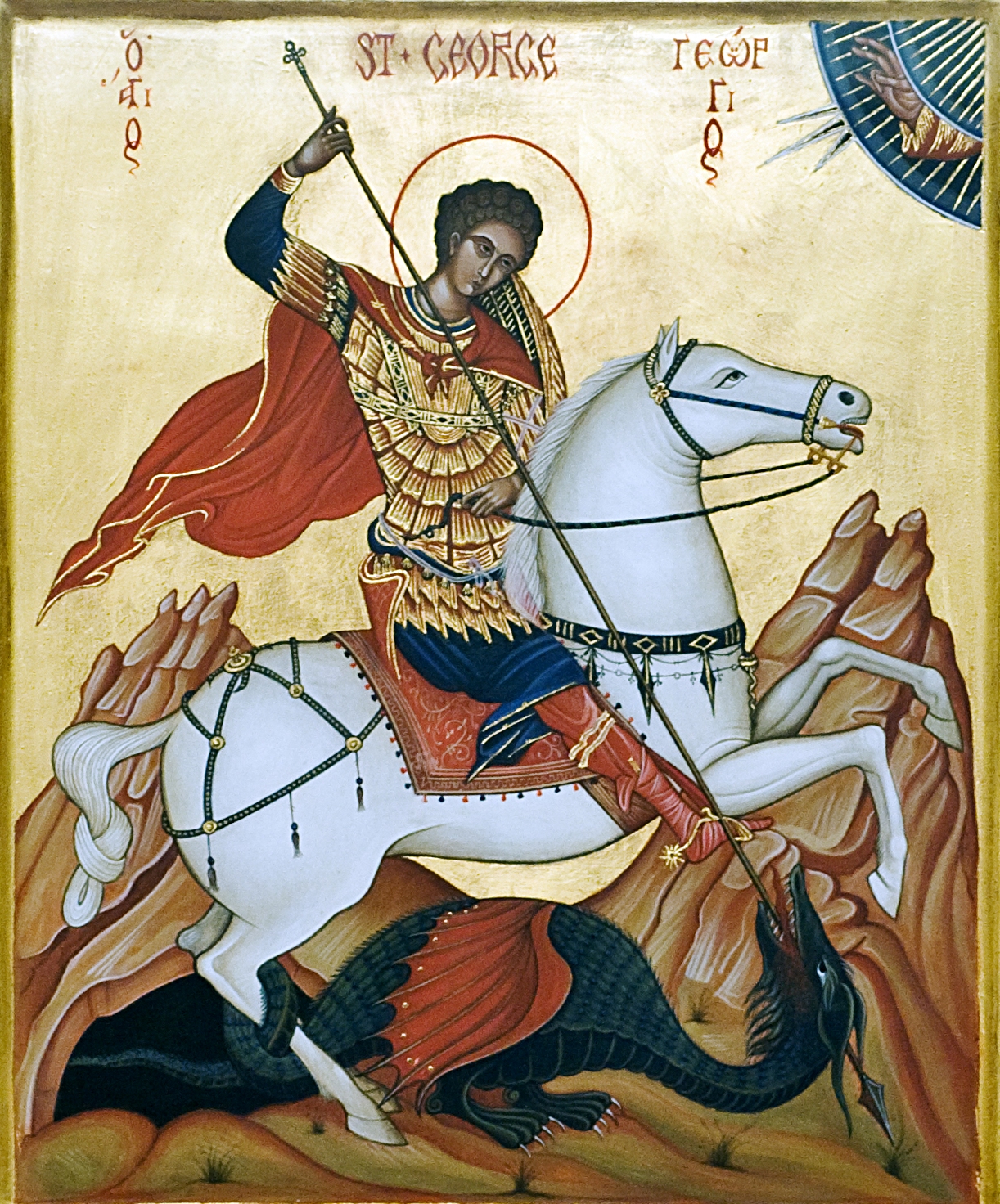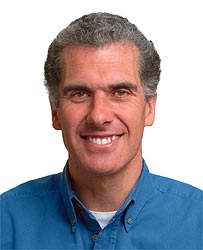
St George’s Day
It is impossible to better this encomium to St George, found in Butler’s Lives of the Saints:
GEORGE is honoured in the Catholic church as one of the most illustrious martyrs of Christ. The Greeks have long distinguished him by the title of The Great Martyr, and keep his festival a holiday of obligation. There stood formerly in Constantinople five or six churches dedicated in his honour; the oldest of which was always said to have been built by Constantine the Great; who seems also to have been the founder of the church of St. George, which stood over his tomb in Palestine. Both these churches were certainly built under the first Christian emperors. In the middle of the sixth age the Emperor Justinian erected a new church, in honour of this saint, at Bizanes, in Lesser Armenia: the Emperor Mauritius founded one in Constantinople. It is related in the life of St. Theodorus of Siceon, that he served God a long while in a chapel which bore the name of St. George, had a particular devotion to this glorious martyr, and strongly recommended the same to Mauritius, when he foretold him the empire. One of the churches of St. George in Constantinople, called Manganes, with a monastery adjoining, gave to the Hellespont the name of the Arm of St. George. To this day is St. George honoured as principal patron or tutelar saint by several eastern nations, particularly the Georgians. The Byzantine historians relate several battles to have been gained, and other miracles wrought through his intercession. From frequent pilgrimages to his church and tomb in Palestine, performed by those who visited the Holy Land, his veneration was much propagated over the West. St. Gregory of Tours mentions him as highly celebrated in France in the sixth century. St. Gregory the Great ordered an old church of St. George, which was fallen to decay, to be repaired. His office is found in the sacramentary of that pope, and many others. St. Clotildis, wife of Clovis, the first Christian king of France, erected altars under his name; and the church of Chelles, built by her, was originally dedicated in his honour. The ancient life of Droctovæus mentions, that certain relics of St. George were placed in the church of St. Vincent, now called St. Germaris, in Paris, when it was first consecrated. Fortunatus of Poitiers wrote an epigram on a church of St. George, in Mentz. The intercession of this saint was implored especially in battles, and by warriors, as appears by several instances in the Byzantine history, and he is said to have been himself a great soldier. He is at this day the tutelar saint of the republic of Genoa; and was chosen by our ancestors in the same quality under our first Norman kings. The great national council, held at Oxford in 1222, commanded his feast to be kept a holiday of the lesser rank throughout all England. Under his name and ensign was instituted by our victorious King Edward III in 1330, the most noble Order of knighthood in Europe, consisting of twenty-five knights, besides the sovereign. Its establishment is dated fifty years before the knights of St. Michael were instituted in France, by Lewis XI, eighty years before the Order of the Golden Fleece, established by Philip the Good, duke of Burgundy; and one hundred and ninety before the Order of St. Andrew was set up in Scotland by James V. The Emperor Frederick IV. instituted, in 1470, an Order of knights in honour of St. George; and an honourable military Order in Venice bears his name.
The extraordinary devotion of all Christendom to this saint, is an authentic proof how glorious his triumph and name have always been in the church. All his acts relate, that he suffered under Dioclesian, at Nicomedia. Joseph Assemani shows, from the unanimous consent of all churches, that he was crowned on the 23rd of April. According to the account given us by Metaphrastes, he was born in Cappadocia, of noble Christian parents. After the death of his father, he went with his mother into Palestine, she being a native of that country, and having there a considerable estate, which fell to her son George. He was strong and robust in body, and having embraced the profession of a soldier, was made a tribune, or colonel in the army. By his courage and conduct, he was soon preferred to higher stations by the Emperor Dioclesian. When that prince waged war against the Christian religion, St. George laid aside the marks of his dignity, threw up his commission and posts, and complained to the emperor himself of his severities and bloody edicts. He was immediately cast into prison, and tried, first by promises, and afterwards put to the question, and tortured with great cruelty; but nothing could shake his constancy. The next day he was led through the city and beheaded. Some think him to have been the same illustrious young man who tore down the edicts when they were first fixed up at Nicomedia, as Lactantius relates in his book, On the Death of the Persecutors, and Eusebius in his history. The reason why St. George has been regarded as the patron of military men, is partly upon the score of his profession, and partly upon the credit of a relation of his appearing to the Christian army in the holy war, before the battle of Antioch. The success of this battle proving fortunate to the Christians, under Godfrey of Bouillon, made the name of St. George more famous in Europe, and disposed the military men to implore more particularly his intercession. This devotion was confirmed, as it is said, by an apparition of St. George to our king, Richard I, in his expedition against the Saracens: which vision, being declared to the troops, was to them a great encouragement, and they soon after defeated the enemy. St. George is usually painted on horseback, and tilting at a dragon, under his feet; but this representation is no more than an emblematical figure, purporting, that, by his faith and Christian fortitude, he conquered the devil, called the dragon in the Apocalypse.
Though many dishonour the profession of arms by a licentiousness of manners, yet, to show us that perfect sanctity is attainable in all states, we find the names of more soldiers recorded in the martyrologies than almost of any other profession. Every true disciple of Christ must be a martyr in the disposition of his heart, as he must be ready to lose all, and to suffer anything, rather than to offend God. Every good Christian is also a martyr, by the patience and courage with which he bears all trials. There is no virtue more necessary, nor of which the exercise ought to be more frequent, than patience. In this mortal life we have continually something to suffer from disappointments in affairs, from the severity of the seasons, from the injustice, caprice, peevishness, jealousy, or antipathy of others; and from ourselves, in pains either of mind or body. Even our own weaknesses and faults are to us subjects of patience. And as we have continually many burdens, both of our own and others, to bear, it is only in patience that we are to possess our souls. This affords us comfort in all our sufferings, and maintains our souls in unshaken tranquillity and peace. This is true greatness of mind, and the virtue of heroic souls. But, alas! every accident ruffles and disturbs us: and we are insupportable even to ourselves. What comfort should we find, what peace should we enjoy, what treasures of virtue should we heap up, what an harvest of merits should we reap, if we had learned the true spirit of Christian patience! This is the martyrdom, and the crown of every faithful disciple of Christ.








